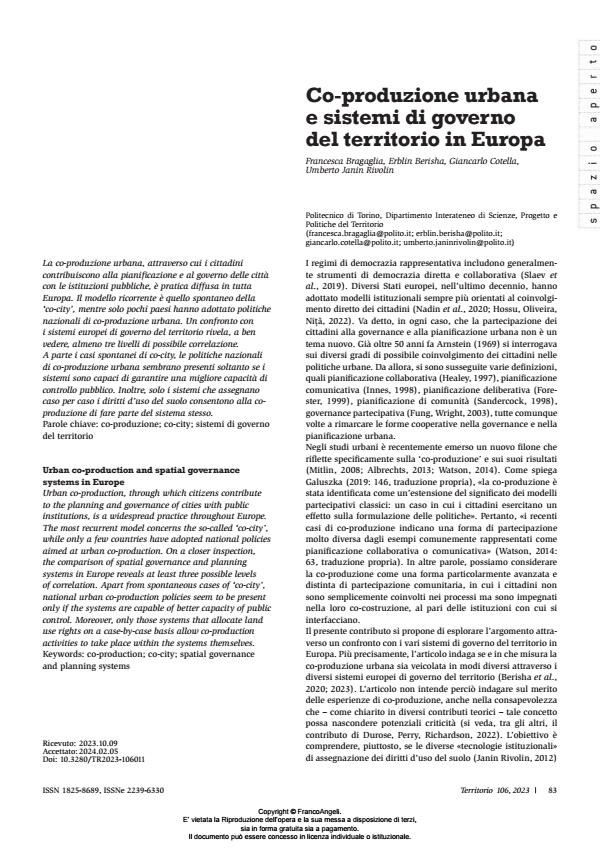Co-produzione urbana e sistemi di governo del territorio in Europa
Titolo Rivista TERRITORIO
Autori/Curatori Francesca Bragaglia , Erblin Berisha, Giancarlo Cotella, Umberto Janin Rivolin
Anno di pubblicazione 2024 Fascicolo 2023/106
Lingua Italiano Numero pagine 9 P. 83-91 Dimensione file 367 KB
DOI 10.3280/TR2023-106011
Il DOI è il codice a barre della proprietà intellettuale: per saperne di più
clicca qui
Qui sotto puoi vedere in anteprima la prima pagina di questo articolo.
Se questo articolo ti interessa, lo puoi acquistare (e scaricare in formato pdf) seguendo le facili indicazioni per acquistare il download credit. Acquista Download Credits per scaricare questo Articolo in formato PDF

FrancoAngeli è membro della Publishers International Linking Association, Inc (PILA)associazione indipendente e non profit per facilitare (attraverso i servizi tecnologici implementati da CrossRef.org) l’accesso degli studiosi ai contenuti digitali nelle pubblicazioni professionali e scientifiche
La co-produzione urbana, attraverso cui i cittadini contribuiscono alla piani?cazione e al governo delle città con le istituzioni pubbliche, è pratica diffusa in tutta Europa. Il modello ricorrente è quello spontaneo della ‘co-city’, mentre solo pochi paesi hanno adottato politiche nazionali di co-produzione urbana. Un confronto con i sistemi europei di governo del territorio rivela, a ben vedere, almeno tre livelli di possibile correlazione. A parte i casi spontanei di co-city, le politiche nazionali di co-produzione urbana sembrano presenti soltanto se i sistemi sono capaci di garantire una migliore capacità di controllo pubblico. Inoltre, solo i sistemi che assegnano caso per caso i diritti d’uso del suolo consentono alla coproduzione di fare parte del sistema stesso.�
Parole chiave:co-produzione; co-city; sistemi di governo del territorio
- Innovazione sociale: cosa cambia per la governance urbana? Una riflessione a partire dai casi di Inghilterra e Francia1 Francesca Bragaglia, in ARCHIVIO DI STUDI URBANI E REGIONALI 140/2024 pp.102
DOI: 10.3280/ASUR2024-140005
Francesca Bragaglia , Erblin Berisha, Giancarlo Cotella, Umberto Janin Rivolin, Co-produzione urbana e sistemi di governo del territorio in Europa in "TERRITORIO" 106/2023, pp 83-91, DOI: 10.3280/TR2023-106011